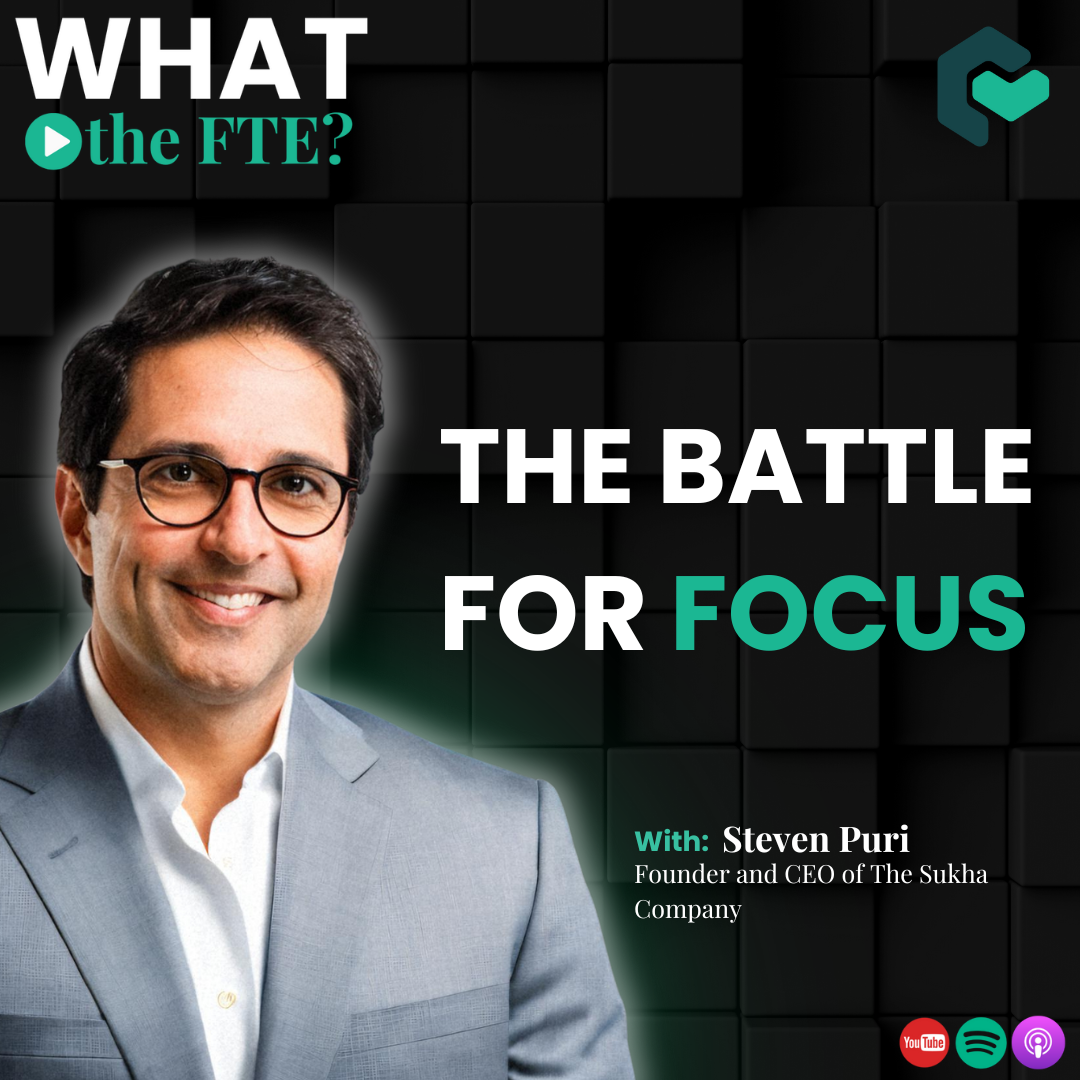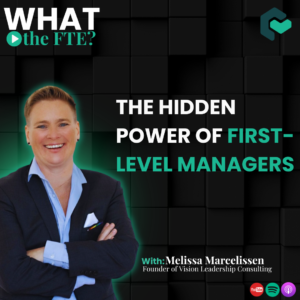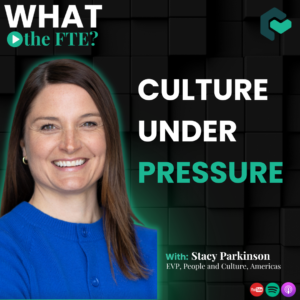For decades, business culture has glorified hustle. Long hours, endless meetings, late-night emails; these were badges of honor in organizations that equated presence with productivity. However, as the world of work evolves and remote and hybrid models redefine how we collaborate, it’s becoming increasingly clear that the hustle culture is unsustainable. What leaders need to foster instead is flow.
On a recent episode of What the FTE?, Steven Puri, a former Hollywood executive turned tech entrepreneur, shared a compelling argument for why ‘flow beats hustle’ and what leaders, especially HR leaders, can do to create conditions for peak performance. His journey from producing blockbusters like Independence Day to building The Sukkha Company, a platform that helps people reclaim focus, is packed with lessons for HR leaders navigating the new era of work.
Hustle Creates Exhaustion. Flow Creates Meaning.
VFlow, a term popularized by psychologist Mihaly Csikszentmihalyi, describes the state of deep focus where time seems to disappear, distractions fade, and performance reaches its peak.
Puri knows what hustle looks like. As an executive at DreamWorks and later 20th Century Fox, he was flying to festivals, running productions, and managing global franchises. From the outside, it was glamorous. From the inside, it was unsustainable.
“There’s a moment I’ll never forget during Die Hard 5,” Puri recalls. “The film wasn’t about anything. It was just math. Someone told me, ‘We can model the revenue. Bruce Willis is free for eight weeks. Just shoot it.’ And I thought, ‘What am I doing with my life?’”
That moment catalyzed a career pivot. Instead of working on films that drained his energy, Puri became obsessed with the science of flow; the psychological state where distractions fade, time melts away, and people do their best work.
“Flow isn’t about working harder. It’s about working in alignment, where skill, challenge, and meaning intersect,” he says.
For HR leaders, this distinction is critical. Hustle burns people out. Flow brings them alive.
The Battle for Focus in a Distracted World
We live in a world where trillion-dollar companies design products explicitly to hijack attention. Puri is blunt about it:
“Their business model is to steal your life, full stop.“
“They employ the best behavioral psychologists, engineers, and designers to keep you scrolling. And the tug of war is: on one side, them. On the other side, you. Who’s going to win?”
Employees who lose that tug of war aren’t just distracted, they’re disengaged. According to Gallup, disengaged employees cost the global economy $8.8 trillion annually. For HR leaders, the stakes are clear: protecting employee attention is now a strategic imperative.
The good news? Flow is a natural antidote to distraction. When people are immersed in meaningful, challenging work, they are far less likely to be pulled into the noise.
Organizations that prioritize flow don’t just gain productivity; they gain engagement, creativity, and loyalty.
Remote Work: A Hiring Problem, Not a Location Problem
Many leaders still blame remote work for productivity issues. Puri disagrees.
“What leaders say is, ‘If I can’t see people at their desks, how do I know they’re working?’ But that’s not a remote problem. That’s a hiring problem,” he argues.
He points to a lesson from filmmaking: if the mission matters, people don’t need surveillance.
“If you tell me you’re working on curing cancer and my dad died of lung cancer, you don’t need to micromanage me. Wherever I am in the world, I’m working on that mission.”
For HR leaders, the insight is clear: mission alignment reduces the need for control. When employees deeply believe in the purpose of the company, their commitment transcends physical location.
Culture as a Strategy, Not a Slogan
Puri identifies two non-negotiables for leaders: mission and culture.
“The two biggest jobs of a leader,” he explains, “are to define the mission of why we exist and to define the culture of how we treat each other, our customers, and our competitors. If you do those well, most of the problems people blame on remote work disappear.”
This echoes a key finding from McKinsey’s Great Attrition study: employees who don’t feel a sense of belonging are 8.6 times more likely to leave their jobs.
- Culture is no longer “soft stuff”; it’s a “hard strategy”.
- Pre-pandemic culture: Social perks, office design, slogans.
- Post-pandemic culture: Psychological safety, mission alignment, leadership modeling.
For senior HR leaders, the question isn’t whether to prioritize culture. It’s whether you’ll treat it as seriously as financial planning.
Practical Levers for Flow in the Workplace
Leaders can create the conditions for flow by focusing on four levers:
- Meaningful Work: Ensure employees understand how their work connects to the company’s purpose. Flow rarely happens in meaningless tasks.
- Optimal Challenge: The sweet spot is when tasks are challenging enough to stretch people but not so complex that they create anxiety.
- Attention Hygiene: Encourage meeting-free focus blocks, distraction management tools, and email boundaries.
- Environmental Cues: Just as some thrive with music or office hums, others focus best with silence or natural sounds. Normalize experimentation with different environmental cues to see what works best for each individual.
The New Mandate for HR Leaders
For senior HR leaders, the implications are profound. The future of work won’t be won by organizations that demand more hustle; it will be won by organizations that create the conditions for flow.
That means:
- Rethinking productivity not as “hours worked” but as “deep work achieved.”
- Hiring for mission alignment, not just technical skill.
- Treating culture as a non-negotiable strategic lever.
- Equipping employees with tools and practices to reclaim focus from distraction.
As Puri puts it:
“We all have something great inside us. The question is: are we going to get it out, or not? My mission is to make sure people don’t die with their best work still inside them.”
For HR leaders shaping the future of work, that’s not just a powerful message. It’s a call to action.
TL;DR: Executive Summary for HR Leaders
- Hustle is unsustainable: Endless hours and “always-on” culture create burnout, not performance.
- Flow drives peak performance: Employees do their best work when challenge, skill, and meaning align.
- Remote work issues are hiring issues: Mission-aligned employees don’t need micromanagement.
- Culture is strategy: Leaders must actively define and model values, not leave culture to chance.
- Protect attention: HR must treat focus as a scarce resource and design environments that support deep work.
If you’d like to hear Steven unpack this in entertaining detail, listen to the full episode of What the FTE? below and if you want to try Steven’s focus and flow platform, you can do so for free here.
🎧 Listen Now:
—
Want more insights like this?
🔗 Browse the full catalogue of What the FTE? episodes
📩 Sign up for the weekly newsletter to get the good stuff straight to your inbox
P.S. Building a high-performance, remote-first team? Certn’s background checks won’t slow you down. 👉Start screening in minutes—not weeks.





